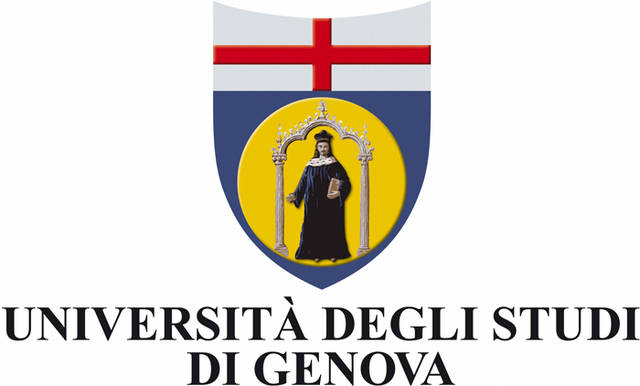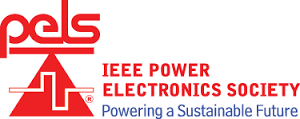Tuesday 3 September 2019 –16.30 to 18.00
1. Wide Bandgap components: GaN
Moderator: Prof. Sybille Dieckerhoff, Technische Universität Berlin, Germany
- Sameh Khalil (Infineon): “Reliability and Quality Assurance Concepts of Power GaN-On-Silicon HEMTs”
- Anna Szerling (The Łukasiewicz Research Network – Institute of Electron Technology, Warsaw): “Issues in developing GaN-based lateral and vertical devices for power electronics”
- Matteo Meneghini (University of Padua): „GaN technology: a reliability perspective”
- Richard Reiner (Fraunhofer IAF, Freiburg): “Opportunities and challenges of highly integrated GaN circuits”
- Oliver Hilt (FBH, Berlin): “Challenges and Perspectives for Lateral GaN Transistor Technology”
- Francois Perreaud (Panasonic)
2. Future challenges for electric vessels and ports: industry prospective
Moderator: Prof. Federico Silvestro – University of Genova
Invited speeches from industry:
- D. Patuelli, Abb Marine, “Sustainable marine trasport: electric, digital and connected ships”
- G. Mottini, Fincantieri SI, “Technology developments for the electric onboard grids”
- F. Vaccaro, Poseico, “Frequency Converters: Cold Ironing Cases History”
- E. Soressi, NIDEC-ASI, “Supercapacitor Based Peak-Shaving & I40 Approaches for Container Ports”
- D. Sciutto, Autorità portuale di Genova e Savona, “Cold ironing in the ports of the Port System Authority of the western Ligurian Sea (Genova, Prà, Savona Vado)”
- E. Palmisani, Duferco, “The Silence and the sea: a new dimension for passenger vessels”
- M. Venturini, Phase Motion Control, “All electric or hybrid small vessels, over and under water: opportunities from DD Pm motor systems”
- P. Capozzella, RGM,“Using the modularity for full electric propulsion system on fast boats, significantly improve performances and optimize costs/benefits for users market”
Sustainable marine trasport: electric, digital and connected ships
D. Patuelli, Abb Marine
Global pressures of climate change, emerging-market economic development and growing urbanization demand new and more environmentally sustainable ways to move people and goods. ABB has become one of the world’s leading enablers of sustainable transportation for all modes, including marine vessels.
At ABB, we believe the next generations of ships will be electric, digital and connected. This vision drives the opportunities for the ABB Marine & Ports business, with us striving to equip the marine industry with solutions that maximize the full potential of vessels and ultimately enable a safe, efficient and sustainable shipping globally.
Technology developments for the electric onboard grids
G. Mottini, Fincantieri SI
Fincantieri SI is a system integrator company belonging to the Fincantieri group. His mission is to provide fully integrated systems for the marine sector. This field requires an increase of the efficiency of the electric grids along with the requirements for the reduction of the emissions. It turns out that new approaches and technologies for the onboard grids are to be considered. Among them, three major topics are under consideration: the use of electric storage equipment, the extensive use of the power electronic converters of new generation and the development of DC grids instead of AC. Fincantieri SI is fully committed with these challenges and it is investing in these new technologies and, as a system integrator, is already developing true applications for cruise ships, ferries and tugs.
Frequency Converters: Cold Ironing Cases History
F. Vaccaro, Poseico
Poseico has developed an innovative series of frequency converters named ACF5060 in order to satisfy the increasing demand of different ship power supply from ground solutions (cold ironing) driven by the new regulatory framework and growing pressure of the public opinion on the reduction of pollution emissions and noise and vibration produced by moored ships. From Low Voltage to Medium Voltage, from 840 kVA to 10 MVA, different cases history of working applications.
Supercapacitor Based Peak-Shaving & I40 Approaches for Container Ports
E. Soressi, NIDEC-ASI
Containers ports are more and more becoming electrical intensive consumers due also to the extensive adoption of electrical cranes. Nidec ASI is using its expertise in industrial automation and electrical conversion systems to implement integrated solutions to manage the port power absorption from the grid. The solution consists in an automation system that includes a supercapacitor based energy storage converters. The automation system creates a communication network between cranes and converters, collects real time operative data, analyses them and sets up pre-emptive strategies to reduce variations in power consumption from the grid, realizing the peak shaving solution.
Cold ironing in the ports of the Port System Authority of the western Ligurian Sea (Genova, Prà, Savona Vado)
D. Sciutto, Autorità portuale di Genova e Savona
Our experience on cold ironing in: 1) Genoa port dry and wet docking area: cold ironing in operation from 2018 2) Prà Port LOLO terminal: cold ironing commissioned on may 2019, forecast entry in to operation in 2020 3) Genoa port cruise and ferry terminal on study 4) Vado Port new LOLO terminal: predisposition for cold ironing 5) Genoa port RORO terminal Messina: predisposition for cold ironing.
The Silence and the sea: a new dimension for passenger vessels
E. Palmisani, Duferco
Duferco Engineering has developed an innovative eco-friendly vessel for passengers featuring catamaran hull to reduce wave and roll, cycloidal propulsors to minimize turbulence on the seabed and batteries supplying the electric propulsion motors for a silent zero-emission navigation in the protected marine areas.
All electric or hybrid small vessels, over and under water: opportunities from DD Pm motor systems
M. Venturini, Phase Motion Control
Over the years Phase Motion Control developed propulsion systems for small vessels, both over and underwater. All share the performance of direct drive, low speed motors which afford high efficiency and very low noise. Underwater solutions are generally redundant, while over water propulsion is slowly expanding to pleasure boats as well. An unexpected hybrid sail+diesel+electric, produced since 2012, is the ultimate in sailing boat experience. Port service boats with installed electric power in the 2-4 MW range are currently in development.
Using the modularity for full electric propulsion system on fast boats, significantly improve performances and optimize costs/benefits for users market
P. Capozzella, RGM
Politecnico of Milan and RGM developed a unique electric propulsion system based on full modularity to be installed in several boats starting from ribs with different lengths but also suitable for sailing boat as replaceable unit of a sail drive conventional propulsion. The advantages achieved with this technology can be perceived from users as exclusive experience given the top performances merged to a completely silent propulsion with zero carbon emission. The system is based on micro pod drives with PM motors which fit perfectly to ribs. The power density achieved for each micro pod is positioned at the top available technologies. The propulsion system uses Lithium technology battery pack which enable a long range up to 50 NM at cruise speed.
Wednesday 4 September 2019 –16.30 to 18.00
1. SiC Industrial Forum: “From the high end niche to the main stream – cranking up the volume”
Session chair: Prof Nando Kaminski, University of Bremen
List of speakers:
- Dr John Palmour, Wolfspeed a Cree company
- Dr Ralf Siemeieniec, Infineon Technologies
- Mr Toru Matsuoka, Mitsubishi Electric Corp.
- Dr Thomas Neyer, ON Semiconductors
- Dr Anup Bhalla, United Silicon Carbide Inc. (USCi)
- Dott.Ing. Edoardo Merli, STMicroelectronics
2. Recommended Practice for Hardware-in-the-Loop (HIL) Simulation Based Testing of Electric Power Apparatus and Controls
Chair: Michael Steurer; Florida State University, Tallahassee, FL, USA
Co-Chair: Georg Lauss, Austrian Institute of Technology, Vienna, Austria
Secretary: Blake Lundstrom, National Renewable Energy Laboratory, Golden, CO, USA
Information:
Established: 2017
Sponsor: PELS, Co-sponsor: IAS, IES
Presenters at EPE ECCE 2019 for WG P2004:
- Masoud Davari; Georgia Southern University, U.S.
- Ewane Etinge; NSWCPD (Naval Surface Warfare Center Philadelphia Division), U.S.
- Joern Geisbuesch; KIT Karksruhe Institute of Technology, Germany
- Jean-Nicolas Paquin; OPAL-RT Technologies, Canada
- Ali Banitalebi Dehkordi; RTDS Technologies Inc., Canada
- Panos Kotsampopoulos; NTUA National Technical University of Athens, Greece
- Antonello Monti; RWTH Aachen University, Germany
- Krishnanjan Gubba Ravikumar; Schweitzer Engineering Laboratories, U.S.
- Georg Lauss, Austrian Institute of Technology, Vienna, Austria
- Blake Lundstrom, National Renewable Energy Laboratory, Golden, CO, U.S.
- Michael Steurer; Florida State University, Tallahassee, FL, USA
Summary:
Hardware-in-the-Loop (HIL) technology is used in industry and academia for cost effective evaluation of new technology in a system relevant environment. However, no standard exists that provides guidance and recommends best practices for the application of HIL simulation. This recommended practice intended to be established in P2004 provides practices for the use of the method of HIL Simulation based Testing of Electric Power Apparatus and Controls. It is intended to be generically applicable in synergy with any specific testing standard, if applicable. P2004 will establish practices for ROS model development, discuss HIL specific documentation, verification and validation, provide guidance on requirements for power amplifiers, DRTS, and HIL interface algorithms for classes of HIL testing needs.
In 2018, chapter titles of the final document have been defined and agreed on. Dedicated persons have been nominated as “Chapter leads” and they have already begun the working process with WG P2004 members. Major focus of this meeting will be to present the first consolidated draft on the basis of the input and the work of the chapter leads and the chair board of the P2004 WG. Further steps for the document will be discussed and working progress will be analysed in the WG meeting.






